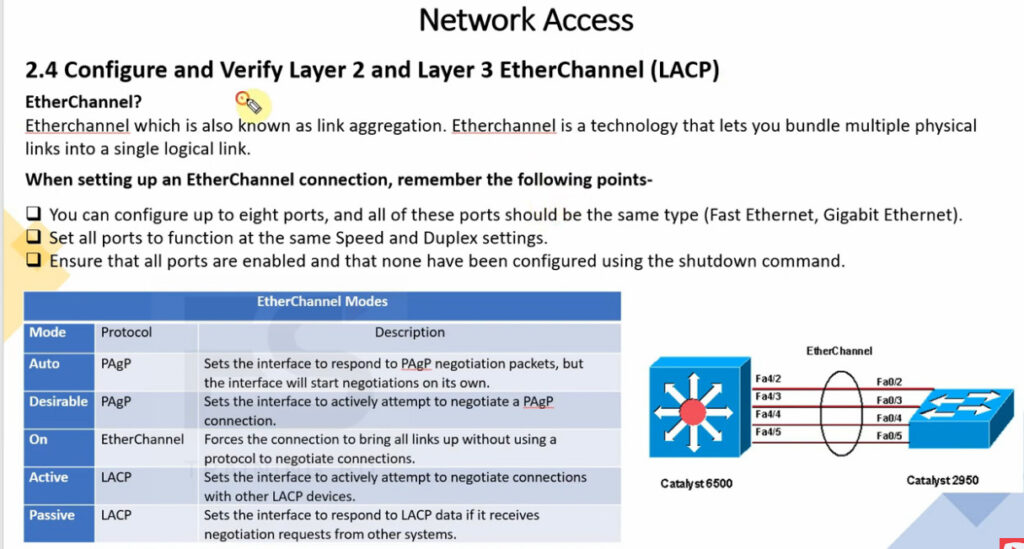- 8777701917
- info@saikatinfotech.com
- Basirhat W.B
EtherChannel is a technology used in networking, specifically in Ethernet-based LANs, to combine multiple physical Ethernet links between switches, routers, or servers into a single logical link. The goal of EtherChannel is to increase bandwidth, provide load balancing, and offer redundancy in case of a link failure.
EtherChannel can operate in different modes, and the type is defined by the protocol or method used to establish and manage the aggregation. The two main types of EtherChannel protocols are:
Static (PAgP/Manual Mode):
Static Mode (also known as “On” mode): This is the most basic form of EtherChannel, where links are manually bundled together without the use of a protocol. No negotiation occurs between the devices. It is simple but less flexible and lacks automatic error handling or negotiation.
Configuration:
Dynamic (using PAgP or LACP):
Static Mode (On):
PAgP (Desirable/Auto):
In practice, LACP is often preferred for compatibility with multi-vendor environments, while PAgP is more common in Cisco-only networks.
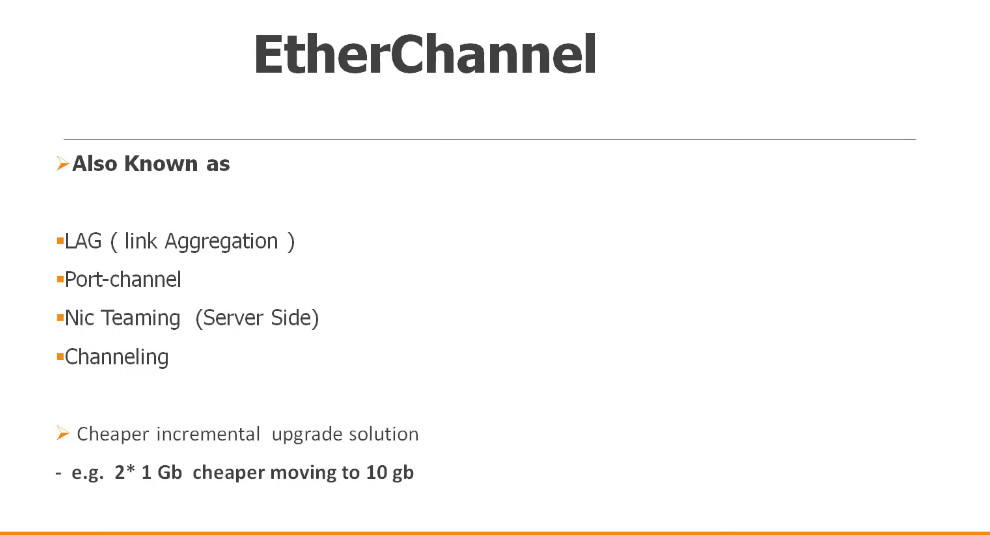

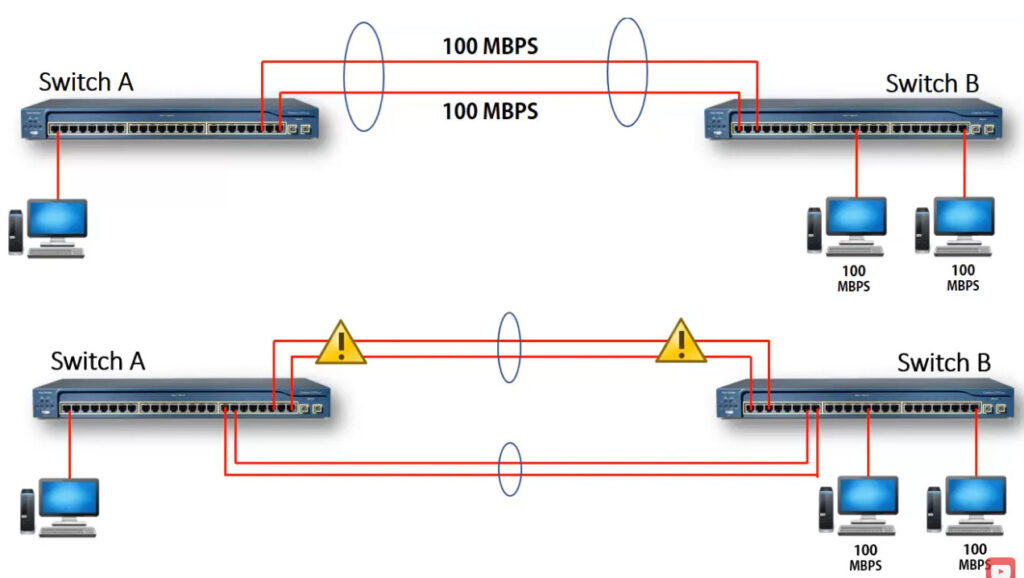
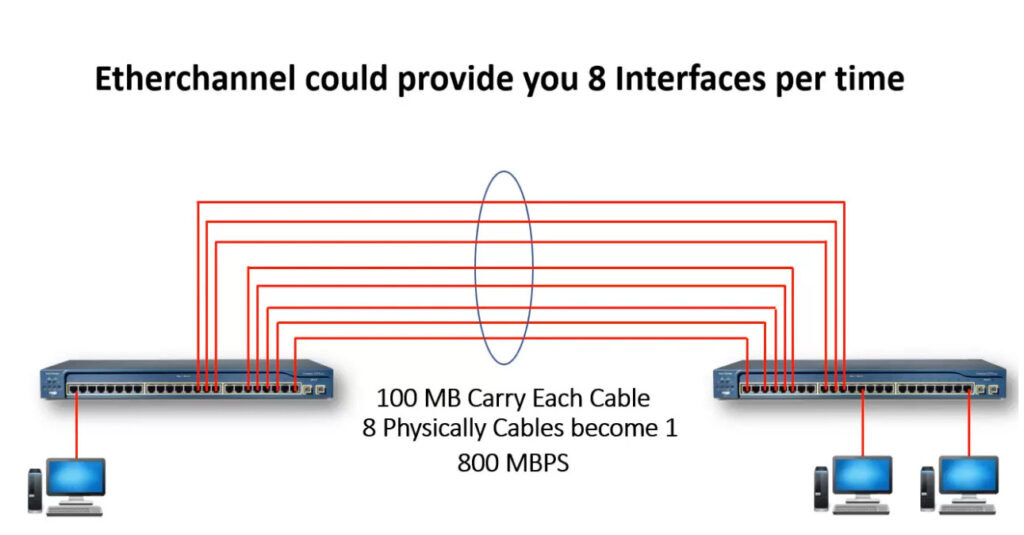
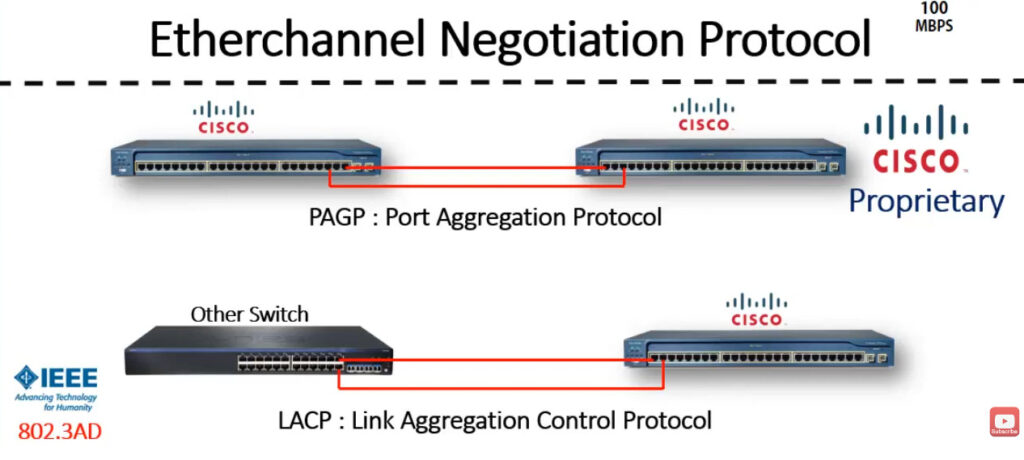
Cisco Protocol PAGP
Switch 1 Configuration
config t
int range fa0/1-2
channel-group 1 mode desirable
Switch 2 Configuration
config t
int range fa0/1-2
channel-group 1 mode auto
Checking Etherchannel Details Commnd
show etherchannel
show etherchannel summary
show interface etherchannel
IEE Protocol LACP
Switch 1 Configuration
config t
int range fa0/1-2
channel-group 1 mode active
Switch 2 Configuration
config t
int range fa0/1-2
channel-group 1 mode passive
show etherchannel
show etherchannel summary
show interface etherchannel
Notes- Maximum 8 Port Bandil For Etherchannel
